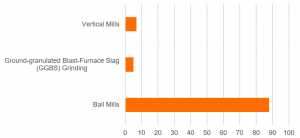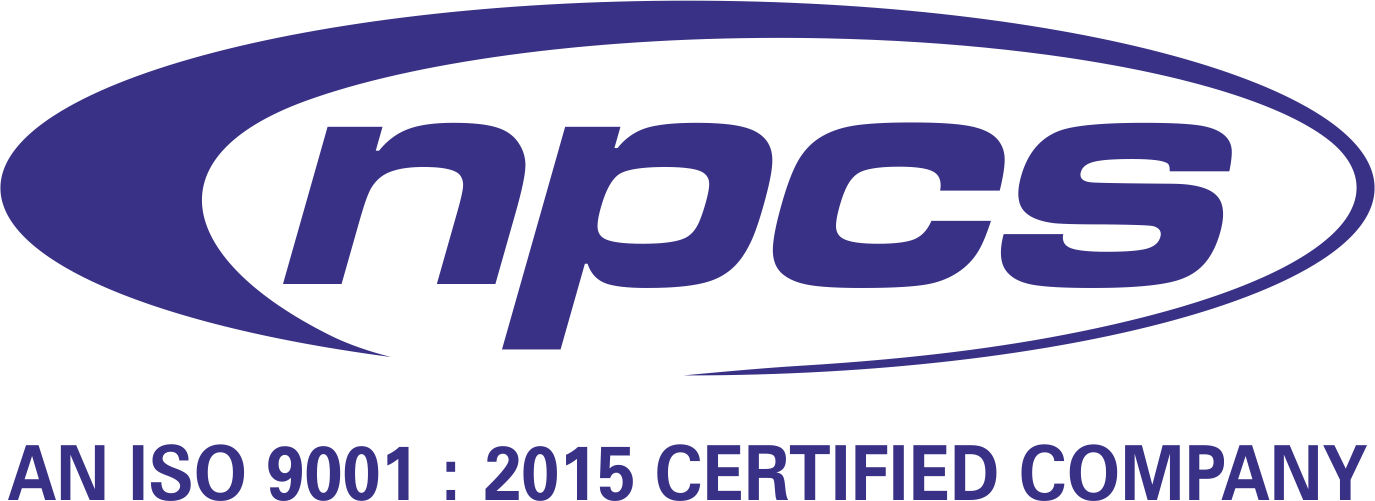As a dependable tool for processing cement, the grinding aid started to gain popularity in the middle of the 20th century. Cement grinding aids have been in use in the cement industry since the 1930s. The earliest patents from the 1930s tested and used powdered mixtures of mineral oil, animal oil, and petroleum cracking residues to enhance cement’s high early strength and processability while also improving cement’s water resistance. It is mixed with calcium chloride or hydrochloric acid, a calcium-containing material resembling lime, and an inert mineral material acting as a carrier. These admixtures significantly increase the cement series’ water resistance and processability.
Visit this Page for More Information: Start a Business in Cement and Cement Based Products Industry
The grinding process in the cement industry uses a significant amount of energy. Three tonnes of various materials must be ground for every tonne of cement produced; this requires a significant amount of electricity (60–70% of the cement’s total electricity consumption is used for the grinding process).
The first is that the molecules of the abrasive aid adsorb on the particles, reducing their surface energy or causing crystals close to the surface layer to dislocate, leading to defects of points or lines, lowering their strength and hardness, and encouraging the formation and growth of cracks.
The second is that by controlling the fluidity of the ore material, the surface electrical property of the particle, and promoting the dispersion of the particle, the grinding aid lowers the viscosity of the ore. This improves the fluidity of the ore material and prevents the particle’s adhesion to the grinding medium and the mill’s lining plate as well as the formation of aggregates of particles.

Related Business Plan: Concrete, Cement and Cement based Products
The purpose of grinding is not to remove material, but to achieve or control dimensions with high precision or to produce a good surface finish that is otherwise challenging to obtain using conventional material removal techniques. Construction, home décor, and other end-use industries stand to gain from grinding aids manufacturing.
Reduce manufacturing costs while improving quality with the right grinding aid!
Grinding aids are organic compounds used to make it easier to grind and mix cement. They primarily serve to decrease the amount of energy needed to grind the clinker to a specified fineness.
Grinding aids, in particular, stop cement particles from adhering or re-agglomerating both during and after the grinding process. Grinding aids enable the cement-making process to be streamlined by increasing process efficiency and material fluidity.
Read Similar Articles: Concrete & Cement Industry
These potential benefits of using cement grinding aids help industrial mills use less energy, which also reduces their energy costs. Grinding aid is a process additive that greatly enhances grinding efficiency in general by lowering the grinding limit. The grinding aid facilitates size reduction, requiring less grinding force from the mill without compromising any of the properties of the finished cement. The reduction of compaction in storage is another advantage of the grinding aids currently in use. It is appropriate for new construction as well as retrofit projects.
The main purpose of a cement grinding aid is to reduce the energy required to grind the clinker into a given fineness. In addition, it can also improve the dispersal of fine particles and improve the flow ability of the cement. Grinding aids are typically chemicals added at a rate of 0.01-0.03% that help to achieve these goals.
The most common raw materials used for the production of grinding aids are triethanolamine (TEA), propylene glycol, and glycerol.
Click here to send your queries/Contact Us
Triethanolamine TEA
(CH2CH2OH)3N
Triethanolamine (TEA) is a tertiary amine and a triol in one organic compound. It is a viscous liquid with an ammonia-like odor. TEA is used as a component in many commercial products including cosmetics, pharmaceuticals, and detergents. It is also a popular grinding aid for cement.
The majority of TEA is produced via the amination of ethylene oxide with ammonia. This process yields a mixture of mono-, di-, and triethanolamine, which is then distilled to produce pure triethanolamine.
TEA is added to the grinding media to improve the grinding efficiency. It does this by reducing the electrostatic repulsion between the particles, which allows them to pack together more tightly. This, in turn, reduces the amount of energy required to achieve a given level of grinding. TEA is also used as an antistatic agent. When added to grinding media, it prevents the build-up of static charge, which can lead to sparks and fires.
Significant research has been done on grinding aids and how they affect cement properties. For instance, it is well known that triethanolamine (TEA), the most common grinding aid in the cement industry, has a complex action on cement pastes that varies depending on the type of cement and the amount of TEA used. When added to Portland cement, TEA has four different effects: a set accelerator at 0.02%, a mild set retarder at 0.25%, a severe set retarder at 0.5%, and a very strong accelerator at 1%.
Related Feasibility Study Reports: Concrete, Cement and Cement based Products and Projects
When used as a grinding aid, TEA reduces the amount of energy needed to grind the clinker (the main component of cement) by 10-20%. This reduction in energy consumption can lead to significant savings in the overall production of cement. TEA also improves the efficiency of the grinding process by helping to keep the particles of clinker evenly sized. This leads to a more consistent final product.
Visit the page Select and Choose the Right Business Startup for You for sorting out the questions arising in your mind before starting any business and know which start-up you can plan.
We, at NPCS, endeavor to make business selection a simple and convenient step for any entrepreneur/startup. Our expert team, by capitalizing on its dexterity and decade’s long experience in the field, has created a list of profitable ventures for entrepreneurs who wish to diversify or venture. The list so mentioned is updated regularly to give you a regular dose of new emerging opportunities.
Market Analysis:
A significant growth driver for the market is the expanding global cement or construction industries.
As per Coherent Market Insights, the global cement grinding aids market is projected to reach around US$ 5,021.3 Million by the end of 2027, in terms of revenue, exhibiting a CAGR of 5.7% during the forecast period (2020-2027).
Read our Books Here: Cement, Asbestos, Ceramics, Bricks, Limestone and Construction Materials Manufacturing Technology

In terms of value, the ball mills segment accounted for the grinding aids’ largest market share of 89.4%, followed by the vertical mills segment.
Ashtech India, BASF SE, CHRYSO SAS, Ecmas Group, GCP Applied Technologies, KMCO, MYK Schomburg, PROQUICESA, Shalimar Tar Products, Sika AG, Thermax Global, and Unisol are some of the leading companies in the global cement grinding aids market.
Cautionary Note:
- The majority of the additives used in cement are organic compounds, but they can also include inorganic salts like chlorides. The most affordable qualities may include liquid and solid impurities that affect the final product or cement grinding.
- TEA is generally considered to be a safe compound when used in small amounts. However, it can be corrosive and irritating to the skin and eyes.
Niir Project Consultancy Service (NPCS), one of the most reliable and secure websites, is the one we use for our reports. We provide the most up-to-date data with the closest measure of accuracy to satisfy our readers. In this report titled “Start Manufacturing Grinding Aids from Triethanolamine,” you may acquire all about the business, from determining the demand for raw materials to generating the components and processing. Engineers, project specialists, and industrial consultancy firms in India and around the world have benefited from the NPCS study. Each project report provides details on several company plans, giving technological, technical, independent contractor, and startup resources on the NPCS website. You might look at it there as well.
Click here to send your queries/Contact Us
Reasons for Buying NIIR Report:
â— Our research report helps you get a detailed picture of the industry by providing an overview of the industry along with the market structure and classification.
â— Our report provides market analysis covering major growth driving factors for the industry, the latest market trends and the regulatory framework of the industry.
â— Our Report provides an analysis and in-depth financial comparison of major Players / Competitors.
â— Our Report provides indispensable buyers data with their company financials as well as the contact details, which can be an important tool in identifying the target customers.
â— Our report provides forecasts of key parameters which help to anticipate the industry performance.
â— We use reliable sources of information and databases. And information from such sources is processed by us and included in the report.
See More Links:
- Start a Business in Asia
- Start a Business in Potential Countries for Doing Business
- Best Industry for Doing Business
- Business Ideas with Low, Medium & High Investment
- Looking for Most Demandable Business Ideas for Startups
- Startup Consulting Services
- Start a Business in Africa
- Start a Business in India
- Start a Business in Middle East
- Related Videos
- Related Books
- Related Projects
- Related Market Research Reports
SS_20Art22





